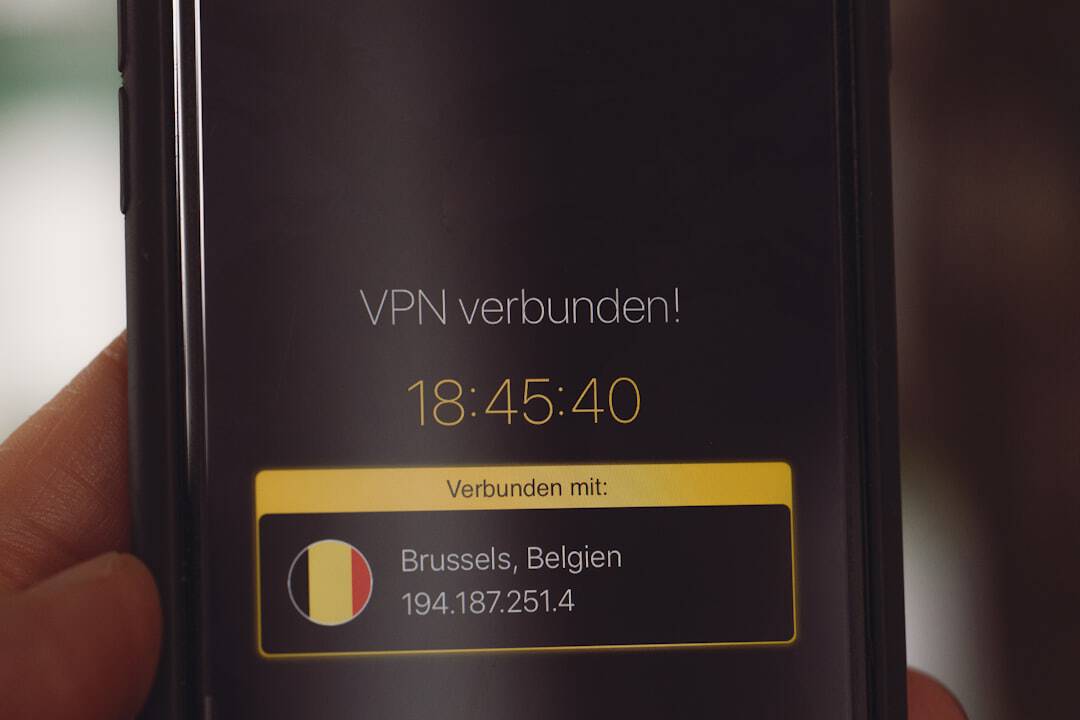Zero Trust Network Access (ZTNA) is a security framework that eliminates implicit trust based on network location within an organization. Unlike traditional network security models that assume internal network traffic is trustworthy, ZTNA operates on the principle of “never trust, always verify.” This approach treats every user, device, and connection attempt as potentially hostile, regardless of its origin. ZTNA implements continuous authentication and authorization processes, granting access based on identity, device security status, and contextual factors rather than network location.
This model is particularly relevant in today’s digital landscape, characterized by increased remote work and cloud-based services. The ZTNA framework is designed to provide secure access to applications and resources, regardless of their hosting environment. It enables users to securely access organizational resources from any location without compromising security.
By implementing ZTNA, organizations can reduce their attack surface and mitigate risks associated with unauthorized access and data breaches. ZTNA represents a significant shift in network security paradigms, moving away from traditional perimeter-based approaches towards a more dynamic and adaptive model. This evolution aligns with modern IT environments, which often involve distributed workforces and hybrid cloud infrastructures.
As a result, ZTNA offers a more robust and flexible security solution for contemporary organizational needs.
Key Takeaways
- Zero Trust Network Access (ZTNA) is a security model that requires strict identity verification for every person and device trying to access resources on a private network, regardless of whether they are inside or outside the network perimeter.
- Securing network access is crucial for protecting sensitive data and preventing unauthorized access, especially in today’s remote work environment where employees access company resources from various locations and devices.
- Fortinet’s ZTNA solution provides a comprehensive approach to securing network access by offering secure, granular access control and continuous monitoring to ensure only authorized users and devices can access specific resources.
- Key features of Fortinet’s ZTNA solution include multi-factor authentication, micro-segmentation, application access control, and real-time threat intelligence to proactively identify and respond to potential security threats.
- Implementing Fortinet’s ZTNA solution in your network involves assessing your organization’s security needs, deploying the solution, and continuously monitoring and updating access policies to adapt to changing security threats and business requirements. This can help improve security posture and reduce the risk of unauthorized access to critical resources.
The Importance of Securing Network Access
The Evolving Threat Landscape
Cyber threats are constantly evolving, and attackers are becoming increasingly sophisticated in their methods. As a result, organizations must adopt a more proactive and dynamic approach to network security.
Unauthorized access to the network can lead to a range of detrimental consequences, including data breaches, financial losses, reputational damage, and legal repercussions. By securing network access, organizations can mitigate these risks and ensure that only authorized users and devices are able to connect to their network resources.
The Importance of Regulatory Compliance
Additionally, with the growing emphasis on privacy and data protection regulations such as GDPR and CCPA, organizations are under increasing pressure to implement robust security measures to safeguard sensitive information. Securing network access is not only a matter of protecting the organization’s assets but also a critical component of maintaining trust with customers and stakeholders.
Introducing Fortinet’s ZTNA Solution
Fortinet’s ZTNA solution is a cutting-edge security offering that provides secure access to applications and resources, regardless of their location. Built on the principles of Zero Trust Network Access, Fortinet’s solution ensures that every user and device attempting to connect to the network is thoroughly authenticated and authorized before being granted access. This approach significantly reduces the risk of unauthorized access and data breaches, while also enabling organizations to embrace modern IT trends such as remote work and cloud services.
Fortinet’s ZTNA solution is designed to be highly scalable and adaptable, making it suitable for organizations of all sizes and industries. Whether an organization is looking to secure access for a small team of remote workers or a large-scale enterprise with a complex network infrastructure, Fortinet’s ZTNA solution can be tailored to meet their specific needs. With a focus on user identity, device security posture, and contextual factors, Fortinet’s ZTNA solution provides a comprehensive approach to network security that goes beyond traditional perimeter-based measures.
Key Features of Fortinet’s ZTNA Solution
| Key Features | Description |
|---|---|
| Zero Trust Network Access (ZTNA) | Provides secure access to applications and resources based on identity and context. |
| Multi-factor Authentication (MFA) | Enhances security by requiring multiple forms of verification for user access. |
| Dynamic Access Control | Adapts access policies based on user behavior and context. |
| Secure Web Gateway | Protects users from web-based threats and enforces security policies. |
| Endpoint Security Integration | Integrates with endpoint security solutions for comprehensive protection. |
Fortinet’s ZTNA solution offers a range of key features that set it apart as a leading security offering in the market. One of the standout features is its comprehensive authentication and authorization capabilities. By leveraging user identity, device security posture, and contextual factors, Fortinet’s ZTNA solution ensures that only authorized users and devices are able to access the network.
This multi-layered approach to authentication significantly reduces the risk of unauthorized access and strengthens overall network security. Another key feature of Fortinet’s ZTNA solution is its seamless integration with cloud services and applications. As organizations increasingly migrate their resources to the cloud, it is essential that their security solutions are able to adapt to this shift.
Fortinet’s ZTNA solution provides secure access to cloud-based resources, enabling users to connect from anywhere without compromising security. This flexibility is crucial for modern organizations that need to support remote work and distributed teams. Furthermore, Fortinet’s ZTNA solution offers robust visibility and control capabilities, allowing organizations to monitor and manage network access with ease.
With detailed insights into user activity and resource usage, organizations can identify potential security risks and take proactive measures to mitigate them. This level of visibility is essential for maintaining a strong security posture and ensuring compliance with regulatory requirements.
Implementing Fortinet’s ZTNA Solution in Your Network
Implementing Fortinet’s ZTNA solution in your network involves several key steps to ensure a seamless integration and optimal security posture. The first step is to assess your organization’s specific security needs and requirements. This involves conducting a thorough review of your existing network infrastructure, identifying potential vulnerabilities, and determining the scope of your ZTNA implementation.
Once your organization’s security needs have been assessed, the next step is to design a tailored ZTNA solution that aligns with your specific requirements. This may involve configuring authentication policies, defining access controls, and integrating the solution with your existing IT environment. Fortinet’s team of experts can provide guidance and support throughout this process, ensuring that your ZTNA implementation is optimized for maximum security and efficiency.
After the design phase, the next step is to deploy Fortinet’s ZTNA solution across your network infrastructure. This may involve installing necessary software components, configuring network settings, and conducting thorough testing to ensure that the solution operates as intended. Fortinet’s team can provide assistance during this deployment phase, helping to minimize disruption to your organization’s operations while maximizing the security benefits of the ZTNA solution.
Benefits of Using Fortinet’s ZTNA Solution

There are numerous benefits to using Fortinet’s ZTNA solution to secure network access within your organization. One of the primary benefits is enhanced security posture. By implementing a Zero Trust Network Access model, organizations can significantly reduce their attack surface and minimize the risk of unauthorized access and data breaches.
This proactive approach to security helps to safeguard sensitive data and maintain regulatory compliance. Another key benefit of using Fortinet’s ZTNA solution is improved flexibility and productivity for remote workers. With secure access to applications and resources from anywhere, employees can work more efficiently without compromising security.
This flexibility is particularly important in today’s digital landscape, where remote work has become increasingly prevalent. Additionally, Fortinet’s ZTNA solution offers cost savings by reducing the need for traditional VPNs and other perimeter-based security measures. By adopting a more dynamic and adaptive approach to network security, organizations can streamline their security infrastructure while achieving greater protection against modern cyber threats.
Best Practices for Securing Network Access with Fortinet’s ZTNA Solution
To maximize the benefits of Fortinet’s ZTNA solution and ensure comprehensive security for your organization’s network access, it is important to follow best practices for implementation and management. One best practice is to regularly review and update authentication policies to align with evolving security requirements. By staying proactive in managing authentication controls, organizations can adapt to new threats and maintain a strong security posture.
Another best practice is to leverage Fortinet’s advanced visibility and control capabilities to monitor user activity and resource usage. By maintaining a clear understanding of network access patterns, organizations can identify potential security risks early on and take proactive measures to mitigate them. This level of visibility is essential for maintaining a strong security posture and ensuring compliance with regulatory requirements.
Furthermore, it is important to regularly assess the effectiveness of Fortinet’s ZTNA solution within your organization’s specific context. This may involve conducting regular security audits, reviewing access controls, and identifying areas for improvement. By staying proactive in evaluating the performance of the ZTNA solution, organizations can continuously optimize their security posture and adapt to new challenges in the evolving threat landscape.
In conclusion, securing network access is essential for protecting sensitive data, maintaining regulatory compliance, and safeguarding an organization’s overall integrity. Fortinet’s ZTNA solution offers a comprehensive approach to network security that aligns with modern IT trends such as remote work and cloud services. By implementing Fortinet’s ZTNA solution and following best practices for its management, organizations can achieve enhanced security posture, improved flexibility for remote workers, cost savings, and peace of mind knowing that their network access is thoroughly protected against modern cyber threats.
Fortinet’s Zero Trust Network Access (ZTNA) solution is revolutionizing the way organizations approach network security. This innovative approach is discussed in more detail in a recent article on Metaversum.it, which explores the challenges and opportunities of the regulatory landscape in relation to ZTNA. The article provides valuable insights into how organizations can navigate the complex regulatory environment while implementing ZTNA to enhance their security posture. For more information, you can read the full article here.
FAQs
What is Fortinet ZTNA solution?
Fortinet ZTNA (Zero Trust Network Access) solution is a security framework that ensures secure access to applications and resources, regardless of the user’s location.
How does Fortinet ZTNA solution work?
Fortinet ZTNA solution works by authenticating and authorizing users before granting them access to specific applications and resources. It uses a zero-trust approach, where access is only granted on a need-to-know basis and is continuously monitored for any potential security threats.
What are the key features of Fortinet ZTNA solution?
Key features of Fortinet ZTNA solution include identity-based access control, multi-factor authentication, continuous monitoring and policy enforcement, secure access to applications and resources, and integration with existing security infrastructure.
What are the benefits of using Fortinet ZTNA solution?
The benefits of using Fortinet ZTNA solution include improved security posture, reduced risk of unauthorized access, enhanced user experience, simplified access management, and compliance with industry regulations and standards.
Is Fortinet ZTNA solution suitable for all types of organizations?
Yes, Fortinet ZTNA solution is designed to cater to the security needs of organizations of all sizes and across various industries. It can be customized to meet the specific requirements of different organizations.











Leave a Reply